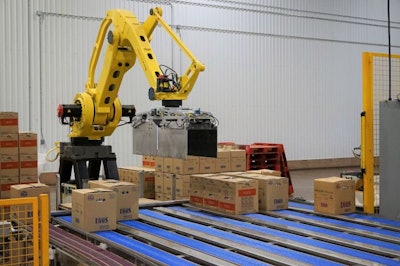
The not-so-distant future is expected to bring even more automation to the egg processing industry than there already is.
Read more about the future of egg processing exclusively in the August issue of Egg Industry.
When it comes to washing, inspecting, grading and packing shell eggs at an inline facility, already the vast majority of the eggs can make it from the hen to the egg carton without being touched by a human.
But robots will be used for more activities in egg processing and packing plants in the future. This optimism regarding the future of intelligent breast deboning is the result of the lower cost of robots and the drop in the cost of sensors and computing power needed to operate machinery that can adjust itself on the fly.
Robots for packing egg cartons into case boxes and others for stacking cases on pallets will be more widely adopted in egg packing plants. Another significant factor in the equation will be the increasing cost of labor as well as the difficulty of staffing weekend and holiday shifts.
Automation and robots may also play a role in food safety in the future. The avian influenza outbreaks around the world have called into question the tradeoffs between farm size and disease risk. Automated equipment that can wash, inspect, grade and pack greater volumes of eggs per hour has been one of the economic drivers for farms with greater hen numbers.
Producing eggs on a greater number of smaller farms that are geographically dispersed would seem to reduce the risk of an outbreak taking out all of an egg company’s hens, as long as each of the farms grades and packs its own eggs. Reduced costs for smaller versions of automated equipment would help to make geographic dispersal of hens more economical.
You’ll also learn about:
- 5 questions about cage-free hen health, welfare
- Why the Mexican egg industry is gradually decentralizing
















